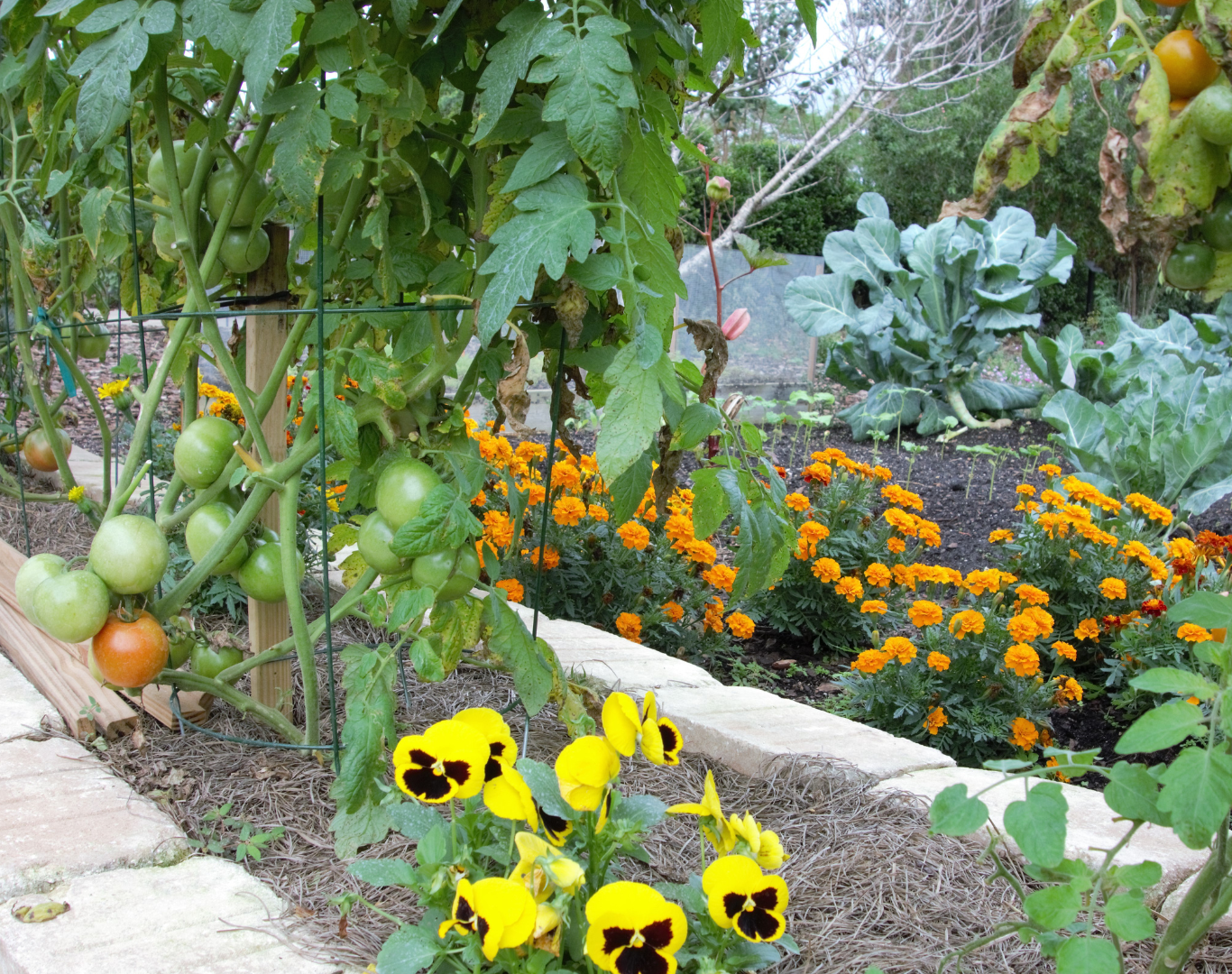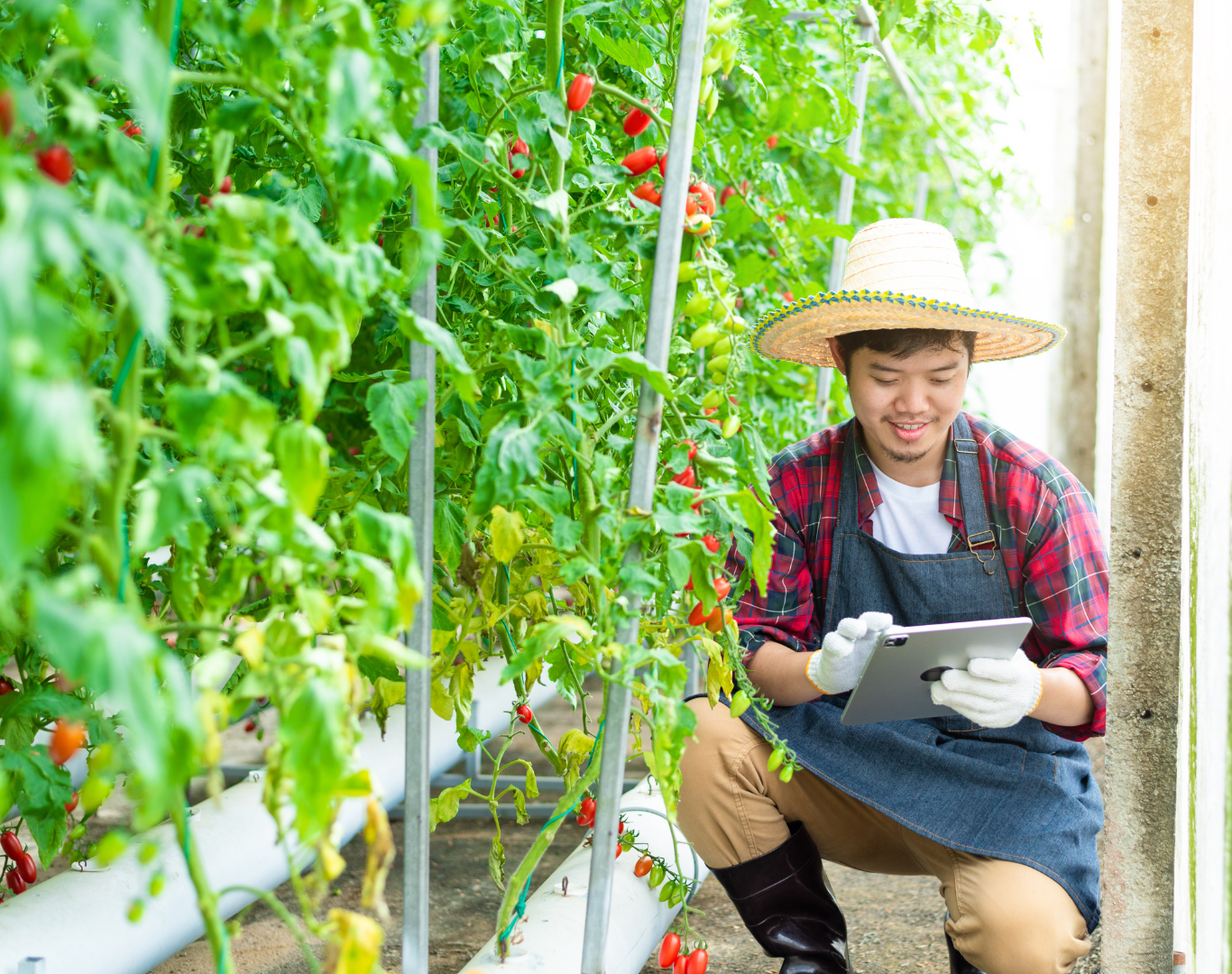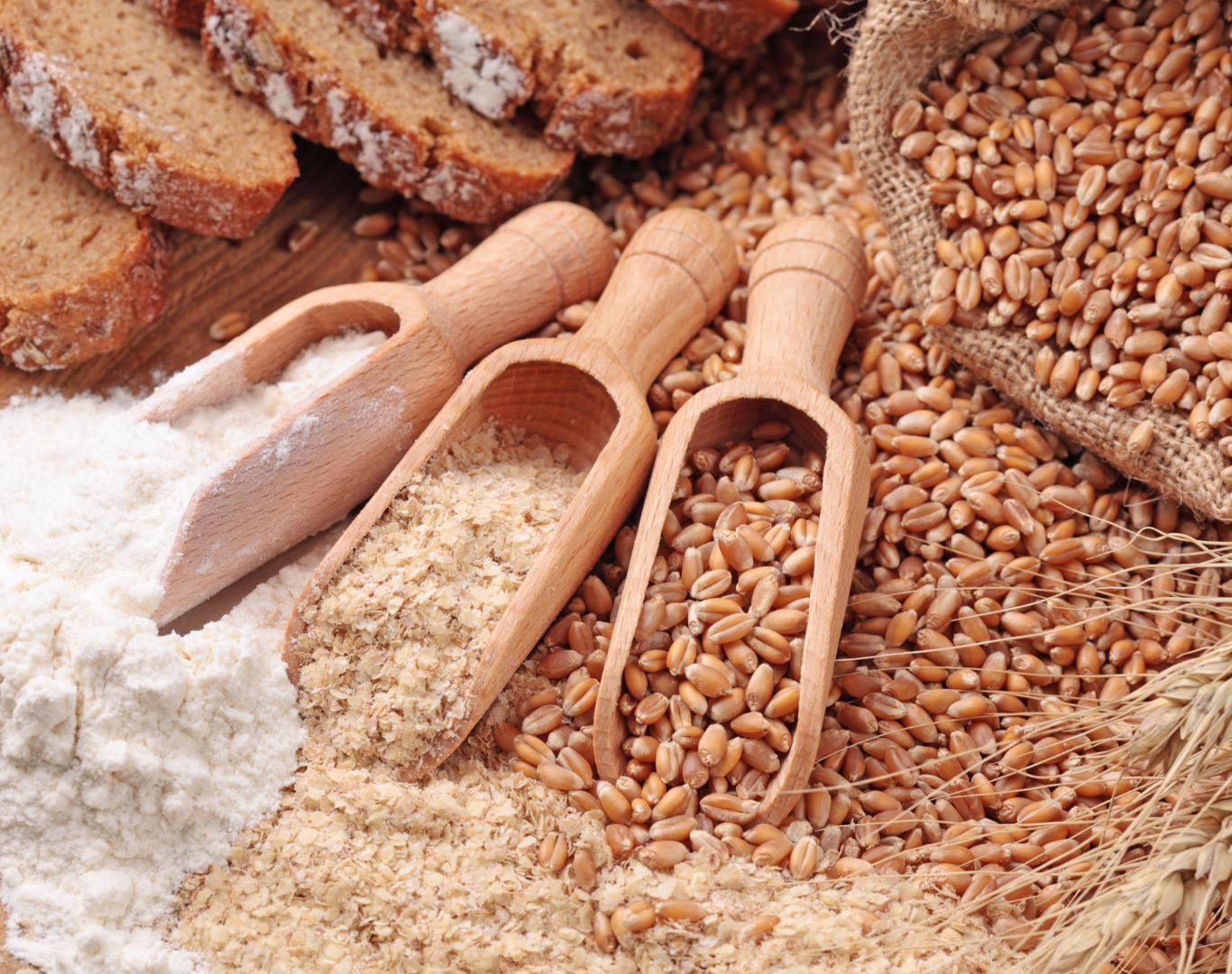The Beginners Handbook Embracing Permaculture Principles for a Greener Future

Permaculture is a holistic approach to gardening and farming that aligns closely with natural ecosystems and sustainable practices. Embracing permaculture principles not only benefits the environment but also enhances the health and yield of your garden. This handbook serves as a comprehensive guide for beginners who are eager to implement permaculture techniques into their gardening routine for a greener and more productive future.
Key Takeaways
- Companion planting can significantly improve garden health and yield by fostering biodiversity and natural cooperation among plants.
- Becoming an Ag Day influencer involves leveraging digital platforms to raise awareness and celebrate the importance of agriculture in our lives.
- Starting your own seedlings is a cost-effective and rewarding way to take control of your garden's growth from the very beginning.
- Incorporating ancient grains into your diet supports sustainable agriculture and offers a wealth of nutritional benefits.
- Laser acupuncture combines traditional healing practices with modern technology, offering a non-invasive alternative to conventional acupuncture.
The Magic of Companion Planting
Understanding the Basics of Companion Planting
At the heart of a thriving garden is the art of companion planting, where each plant is carefully selected to support its neighbor. It's like a botanical buddy system, where some plants can deter pests naturally, while others may improve soil health or even enhance the flavor of their garden companions.
To get started, consider these simple pairings:
- Basil with tomatoes for improved growth and flavor
- Marigolds among vegetables to ward off pests
- Carrots and leeks to protect each other from common pests
Remember, companion planting is about more than just pest control; it's about creating a diverse ecosystem that benefits all its inhabitants. By embracing this method, you're not only cultivating plants but also nurturing a balanced, sustainable environment.
Embrace the diversity of your garden by introducing plants to their perfect companions and watch as they grow stronger together.
Top Companion Plants for Your Veggie Garden
When you're plotting out your veggie garden, knowing the best companions can make all the difference. Carrots and leeks, for instance, are like the dynamic duo of the underground. They don't just coexist; they actively help each other grow better. The leeks' natural pest-repelling properties protect the carrots, allowing both to flourish.
Tomatoes and basil also share a special bond. Not only do they complement each other on the plate, but in the garden, basil's aromatic leaves work to repel thrips, enhancing the health and taste of your tomatoes. It's a flavorful friendship that also serves as a natural pest control.
Here's a quick guide to get you started:
- Basil and tomatoes: Basil repels thrips.
- Dill attracts ladybugs, which eat aphids.
- Marigolds: These bright flowers deter a variety of pests and can improve soil health.
Remember, companion planting is more than just placing plants together; it's about creating a thriving ecosystem in your own backyard. Embrace this philosophy for a garden that's not only productive but also sustainable.
The Benefits of Biodiversity in Your Backyard
Biodiversity in your backyard isn't just about the beauty of a variety of plants and animals; it's a robust ecosystem working in harmony. By fostering a diverse garden, you're creating a stronghold for nature's resilience. This resilience translates to fewer pests, as a range of plants can attract beneficial insects that keep harmful ones in check. It's a natural pest control that's both effective and environmentally friendly.
Companion planting plays a pivotal role in this ecological dance. For example, marigolds emit a scent that deters nematodes, while basil can improve the flavor and growth of tomatoes. Here's a simple list to get you started:
- Marigolds: Deter nematodes and other pests
- Basil: Enhances tomato health and flavor
- Nasturtiums: Attract aphid-eating predators
- Chives: Repel carrot flies
Embrace the concept of companion planting and watch as your garden becomes a testament to nature's synergy. With each plant supporting the other, you're not just gardening; you're stewarding a slice of the ecosystem.
Remember, a biodiverse garden is a step towards a sustainable future. It's a living library of interactions where every organism, from the tiniest insect to the tallest sunflower, has a role to play in the health of our planet.
How to Become an Ag Day Influencer
Celebrating Agriculture in the Digital Age
As we gear up for National Ag Day on March 19, 2024, there's a palpable excitement in the air. It's a day when we can all come together to appreciate the tireless efforts of our farmers and the abundance they provide. Becoming an Ag Day Influencer is more than just a title; it's a chance to be a part of a larger movement that celebrates and educates about the importance of agriculture.
To get started, why not organize a series of events that bring the community closer to the heart of farming? Here's a simple list to spark some inspiration:
- An Ag Day-themed breakfast to kick off the celebration.
- A petting zoo to connect people with farm life.
- Educational field trips to local farms for a hands-on learning experience.
- A pizza party on a farm or in a classroom, highlighting agriculture’s role in our favorite foods.
- A farm fair to explore the latest in agricultural technology and innovations.
Embrace the opportunity to share your passion for agriculture with the world. Your voice can help shape the narrative and ensure that the significance of farming is recognized and valued.
Don't forget to head over to agday.org to sign up and access all the tools and resources you need. By sharing your stories, photos, and videos on social media, you encourage others to join in the festivities. Let's use the digital stage to celebrate the backbone of our nation and foster a deeper connection with the food we eat and the people who produce it.
Tips for Engaging Your Community in Ag Day
Becoming an Ag Day Influencer is a fantastic way to foster a deeper connection between your community and the agricultural world. Start by signing up at agday.org to access a wealth of resources designed to help you share the agricultural narrative. Use social media to spread your stories, photos, and videos, and inspire others to participate in the National Ag Day celebrations.
Here are a few creative ideas to get your community involved:
- Host an Ag Day-themed breakfast to energize the day with a farm-fresh start.
- Bring the farm closer to home with a petting zoo, allowing people to interact with farm animals.
- Organize educational field trips to local farms, providing a hands-on approach to learning about agriculture.
- Celebrate with a pizza party that showcases the journey of agriculture in creating our beloved dishes.
- Set up a farm fair to display the latest agricultural technologies and innovations.
Embrace professionalism in your role as an Ag Day ambassador. Your conduct reflects the spirit of the day, so be sure to use appropriate language, dress suitably for events, and follow through on your commitments.
Joining the movement as an Ag Day Influencer not only helps you build communication and community engagement skills but also supports a vital cause. Let's work together to celebrate the backbone of our nation!
Creating Impactful Ag Day Content
Becoming an Ag Day Influencer is a rewarding way to connect with your community and celebrate the agricultural sector. Start by signing up at agday.org to access a wealth of resources designed to help you craft and share compelling stories and visuals.
Embrace the role of an Ag Day ambassador and use your voice to highlight the importance of agriculture in our daily lives.
Creating engaging content is more than just posting on social media; it involves organizing events that bring people closer to the source of their food. Here's a quick list of event ideas to get you started:
- An Ag Day-themed breakfast
- A petting zoo for a touch of farm life
- Educational field trips to local farms
- A pizza party showcasing agriculture's role in our favorite dishes
- A farm fair featuring the latest agricultural innovations
Remember, your professionalism as an Ag Day ambassador will resonate with your audience, fostering a deeper appreciation for the hard-working people behind our nation's agriculture.
Sprouting Success
The Joy of Growing Your Own Seedlings
There's something truly special about the act of growing your own seedlings. It's a process that connects us to the earth and to the cycles of nature. Starting with a tiny seed and nurturing it into a thriving plant is a journey that's both educational and deeply fulfilling.
To begin, prep your pots with moist potting soil, ensuring you leave a bit of space at the top. This is where your seedlings will find their first home, drawing nutrients and strength to grow. Next, sow your seeds according to their specific needs—some prefer a shallow bed, while others need to be tucked in a little deeper. Always check the seed packet for guidance.
Watering wisely is crucial. After planting, give your seeds a gentle drink, keeping the soil moist but not waterlogged. Too much water can be just as detrimental as too little.
Remember, warmth is a welcome mat for germination. If you're starting seeds indoors, consider using a heat mat to encourage those first sprouts. And don't forget the light! A grow lamp can compensate for short days or a lack of natural sunlight, ensuring your seedlings don't miss a beat on their path to growth.
As you embark on this green journey, embrace the principles of zero-waste living. Mindful consumption and community engagement are key to a sustainable lifestyle. Celebrate each milestone in your garden, no matter how small, and share your progress. Sustainability is a journey of progress and collective impact, and every seedling you grow is a step in the right direction.
Essential Supplies for Starting Seeds Indoors
Embarking on the journey of starting seeds indoors is like setting the stage for a grand performance in your garden. Prep Your Pots by filling them with moist potting soil, which will serve as the nurturing ground for your seedlings. Remember, the right soil is like a treasure trove of nutrients for your young plants.
Sow Your Seeds carefully, respecting the depth and spacing that each plant variety demands. This attention to detail can make all the difference in your gardening success. After planting, it's time to Water Wisely. A gentle touch is needed to keep the soil moist without drowning the delicate seeds in excess water.
Warmth and light are the twin pillars of germination. A heat mat can coax your seeds into sprouting by providing a consistent warmth, akin to a spring day's caress. And if sunlight is scarce, a grow lamp will be your seedlings' best friend, ensuring they grow up strong and not leggy from stretching towards distant light.
Lastly, timing is crucial. Use a planting calendar or consult local experts to know when your seedlings are ready to transition outdoors. With these supplies and a dash of patience, you're well on your way to a bountiful garden.
Troubleshooting Common Seedling Growth Issues
Starting your seedlings indoors can be incredibly rewarding, but it's not without its challenges. Monitor water levels carefully; consistent moisture is crucial, but too much can cause root rot. Remember, water wisely to keep your seedlings happy and healthy.
When it comes to warmth, a little goes a long way. A heat mat can be your best friend, providing the gentle heat needed to encourage germination. Just like a cozy blanket on a chilly night, it can make all the difference for your sprouting seeds.
Lighting is another critical factor. If natural sunlight is scarce, a grow lamp can save the day. Adjust its height to prevent your seedlings from stretching towards the light or getting too hot. It's all about finding that sweet spot where your plants can bask in the glow and grow strong.
Remember, the journey of growing seedlings is a process of learning and adaptation. Each step you take brings you closer to a lush, vibrant garden.
As your plants grow, they may need more space. Transitioning them to larger pots or the great outdoors requires a gentle touch and the right timing. Keep an eye on their growth and be ready to give them the room they need to flourish.
Embracing Ancient Grains
Discovering the Nutritional Power of Ancient Grains
As we dig into the past, we unearth the rich nutritional treasure of ancient grains. These grains have been the backbone of human diets for millennia, and today, they're making a remarkable comeback. Their diverse nutrient profile is a game-changer for modern meals, offering a broader range of vitamins, minerals, and antioxidants than conventional grains.
Ancient grains are not just a nod to tradition; they're a step towards a healthier future.
Incorporating these grains into your diet can be a delightful culinary adventure. Here's how you can start:
- Replace rice with quinoa or millet in your favorite dishes.
- Add amaranth to soups and stews for a protein boost.
- Enjoy ancient grains in salads, breakfast bowls, or as a wholesome side dish.
Beyond taste, ancient grains pack a punch for digestive health. High in fiber, they help keep your digestive system running smoothly and may even reduce the risk of chronic diseases. Embrace the old to nourish the new, and let ancient grains transform your meals into a source of sustainable health.
Incorporating Ancient Grains into Everyday Meals
Diving into the world of ancient grains can be both a culinary adventure and a step towards more sustainable eating habits. Start by swapping out modern staples with ancient alternatives; for example, use quinoa or millet instead of rice to give your meals a nutritious twist. Ancient grains like amaranth can also be added to soups and stews, not only for their rich flavors but for a hearty protein boost.
- Replace rice with quinoa or millet
- Add amaranth to soups and stews
- Mix ancient grains into salads and breakfast bowls
Embrace sustainable nutrition through mindful eating, plant-centric diets, and local support. Make conscious choices to nourish your body and the planet, creating a ripple effect of positive change. By incorporating these versatile grains into your diet, you're not just enjoying a meal; you're partaking in a tradition that spans thousands of years and supports the health of our environment.
Ancient grains are not just a source of sustenance; they are a testament to the resilience and adaptability of nature. Their ability to thrive in harsh conditions with minimal resources is a lesson in sustainability we can all learn from.
Supporting Sustainable Agriculture with Ancient Grains
When you choose to incorporate ancient grains into your meals, you're doing more than just treating your taste buds. You're taking a step towards a more sustainable future. These grains, cherished for millennia, are making a comeback, and for good reason. They're robust, requiring less water and fewer inputs than modern crops, and they thrive in a variety of conditions, making them a boon for biodiversity and soil health.
- Sustainability Benefits: Ancient grains contribute to reduced carbon footprints and support eco-friendly farming practices.
- Health Benefits: Packed with nutrients, they offer a range of health advantages over conventional grains.
By embracing ancient grains, we not only enrich our diets but also empower farmers to maintain sustainable practices that benefit our planet. Let's make these nutritious powerhouses a regular part of our modern diet and celebrate the positive impact we can have on the environment and our health.
Exploring the World of Laser Acupuncture
Combining Tradition with Technology
In the realm of healing and wellness, the fusion of traditional practices with modern technology can lead to remarkable outcomes. Laser acupuncture represents this synergy, where the age-old technique of acupuncture is enhanced with the precision of laser technology. This innovative approach offers a non-invasive alternative to the conventional needle-based method, making it an appealing option for those who are needle-shy.
Acupuncture has been revered for its therapeutic effects for centuries. By integrating it with contemporary rehabilitation techniques, patients experience not only improved symptoms but also a harmonious blend of holistic and scientific care. The table below illustrates some of the common conditions addressed by laser acupuncture:
| Condition | Traditional Acupuncture Benefit | Laser Acupuncture Advantage |
|---|---|---|
| Pain Relief | Reduces pain naturally | Offers a needle-free option |
| Stress | Promotes relaxation | Ensures a calming experience |
| Muscle Tension | Eases muscle stiffness | Provides precise targeting |
Embracing this dual approach can lead to a more balanced and effective healing journey. It's about creating a space where tradition meets innovation, and where patients can benefit from the best of both worlds.
As we continue to explore the potential of combining ancient wisdom with cutting-edge technology, we open up new possibilities for health and well-being. The effect of acupuncture combined with rehabilitation training is a testament to the power of this integration, offering enhanced therapeutic benefits and a more comprehensive approach to care.
The Science Behind Laser Acupuncture
Laser acupuncture, a modern twist on the ancient practice, has piqued the interest of both traditionalists and tech enthusiasts alike. It merges the philosophy of traditional acupuncture with the precision of modern laser technology. By targeting specific points on the body, laser acupuncture aims to stimulate the body's natural healing processes without the use of needles.
Efficacy is a key concern when it comes to alternative therapies. A recent systematic review and meta-analysis of randomized controlled trials has shed light on the potential of laser acupuncture. The study focused on conditions like temporomandibular joint disorder, suggesting that laser acupuncture could be a promising treatment option.
While the science is still evolving, the initial findings are encouraging for those seeking non-invasive treatment methods.
Understanding the mechanisms at play involves a blend of biology and physics. The laser's light energy is thought to influence cellular functions, promoting pain relief and healing. This is not just about symptom management; it's about supporting the body's own capacity to recover and maintain balance.
Finding a Qualified Laser Acupuncture Practitioner
Embarking on the journey of laser acupuncture requires finding the right practitioner. It's essential to look for someone who is not only skilled in traditional acupuncture but also trained in the latest laser technology. Make sure they have a good track record and positive reviews from patients.
When searching for a qualified professional, consider using online resources like Zocdoc. For instance, you might come across a listing titled 'Best Blue Shield of California Acupuncturists Near Me' with verified reviews to help you make an informed decision.
Remember, the right practitioner is key to a successful and safe laser acupuncture experience.
Here are a few steps to guide you:
- Check their credentials and certifications.
- Read patient reviews and testimonials.
- Schedule a consultation to discuss your needs and concerns.
- Ask about their experience with laser acupuncture specifically.
Navigating Through Empty Nest Syndrome
Understanding the Emotional Journey
Navigating through Empty Nest Syndrome can be a transformative experience. It's a time when the house feels a bit quieter and the rooms a bit emptier. Embrace this new chapter as an opportunity to rediscover passions and explore new interests. It's not just about coping with the change, but about thriving in it.
One way to thrive is to integrate sustainable practices into your home, creating a harmonious blend of comfort and eco-conscious living. Consider the colors, art, and lighting choices that reflect your personal journey and commitment to the environment.
- Reflect on personal goals and aspirations
- Redesign living spaces to suit new interests
- Engage in community activities or volunteer work
Remember, this period of adjustment is also a time for growth. It's a chance to build a lifestyle that's not only fulfilling but also kind to our planet.
Rediscovering Yourself After the Kids Leave Home
The house might feel a bit quieter, and your daily routine a little emptier, but this newfound solitude is a canvas for self-discovery. Embrace the silence as an opportunity to reconnect with your passions and explore new interests. It's a time to celebrate your independence and the hard work you've put into raising your family.
Rediscovering yourself isn't a race; it's a journey that unfolds one step at a time. Here's a simple list to get you started:
- Reflect on hobbies you've set aside and consider picking them up again.
- Look into classes or workshops that pique your interest—lifelong learning keeps the mind sharp.
- Volunteer for causes that resonate with you, giving back can be incredibly fulfilling.
- Start a fitness routine that suits your pace and keeps you energized.
Remember, it's not about filling every moment of your day, but finding joy and purpose in the activities you choose to pursue. Your nest may be empty, but your life is still full of possibilities.
Building New Relationships and Hobbies
As the nest empties, a world of opportunities flutters in. Embrace the chance to forge new friendships and dive into hobbies that have piqued your interest. Whether it's joining a book club, enrolling in a pottery class, or simply taking daily walks in the park, each activity is a step towards a vibrant social life.
- Rediscover passions you've shelved over the years
- Connect with like-minded individuals
- Explore new activities that challenge and excite you
The key is to remain open to new experiences and to remember that it's never too late to start a new chapter in your life.
Finding joy in these pursuits not only enriches your days but also contributes to your overall well-being. As you cultivate these new parts of your life, you'll find that the connections you make can be just as fulfilling as those you've nurtured with your family. Let your curiosity lead the way and watch as your world expands with each new relationship and hobby.
The Path to a Green Thumb
Cultivating Patience and Connection in the Garden
Gardening is more than just a hobby; it's a journey of patience and connection. Embracing the slow rhythm of nature, you'll find a unique peace in the gradual unfolding of each leaf and blossom. It's a process that can't be rushed, and that's the beauty of it. With each seed planted, you're not just growing plants, but also nurturing your own sense of well-being.
Gardening is an act of hope, a testament to the belief in tomorrow's growth. Here are a few steps to help you along the path:
- Select the right seeds for your climate and soil.
- Prepare your soil with organic matter to nourish your seedlings.
- Plant with care, ensuring each seed has its space to flourish.
- Water regularly, but be mindful not to overdo it.
- Be vigilant for signs of pests or diseases, and act promptly.
Remember, the garden is a mirror of life, reflecting the cycles of growth, resilience, and renewal. The lessons learned here, among the whispering leaves and vibrant blooms, are ones of patience and connection—lessons that extend far beyond the garden's edge.
Step-by-Step Guide to Planting Your Seedlings
Embarking on the journey of planting your own seedlings is a delightful way to connect with nature and witness the miracle of growth. Start with the basics; decide where you will begin sowing your seeds. Without a greenhouse, a west-facing windowsill can serve as a perfect starting point.
- Prep Your Pots: Fill pots with moist potting soil, leaving space at the top. The right soil is crucial for providing your seedlings with essential nutrients.
- Sow Your Seeds: Follow the seed packet instructions for planting depth to ensure the best start for your plants.
- Water Wisely: Gently water the seeds after planting, maintaining consistent soil moisture without overwatering to prevent root rot.
- Warmth Welcomes Germination: Use a heat mat to encourage sprouting, especially if your home lacks the warm touch of spring.
- Let There Be Light: Supplement with a grow lamp if natural sunlight is scarce, adjusting the height as your seedlings grow.
Timing is everything when transitioning your plants outdoors. Use a planting calendar or consult local experts to ensure your seedlings are ready to face the elements.
With these steps, patience, and a bit of green thumb magic, you'll soon celebrate the joys of a thriving garden. Here's to a season of lush growth and bountiful harvests!
Celebrating the Harvest: From Seed to Table
The journey from planting a tiny seed to enjoying a meal from your own garden is a rewarding experience that embodies the essence of permaculture. Harvesting your produce is not just about the food; it's a celebration of your dedication and the cycle of nature.
Gather your friends and family for a harvest dinner, where each dish features something you've grown. Share stories of your gardening adventures and the lessons learned along the way. Here's a simple list to make your harvest celebration a hit:
- Fresh salad with your own lettuce and heirloom tomatoes
- Roasted root vegetables seasoned with garden herbs
- Homemade apple pie using apples from your backyard
Embrace the full circle of gardening by saving some seeds from your harvest for next season. This not only preserves the biodiversity of your garden but also connects you to the next cycle of growth.
Remember, urban farming in cities promotes sustainability, food security, and community engagement. Overcoming challenges with innovative techniques, policies, and community support is key for its success. As you enjoy the fruits of your labor, consider how you can support and inspire others in your community to start their own green journey.
Spring Awakening
Preparing Your Home and Garden for Spring
As the days grow longer and the frost begins to thaw, it's the perfect time to embrace the spring awakening in your home and garden. Start a permaculture garden at the right time of year
- the beginning of the growing season is best. Begin with landscaping for practicalities, setting the stage for a flourishing outdoor space.
Before you dive into planting, it's essential to get your garden beds ready. Clear out any debris, turn the soil, and enrich it with compost to give your plants the best start. Here's a quick checklist to ensure you're on track:
- Clear winter debris from garden beds
- Turn and aerate the soil
- Mix in rich compost or organic matter
- Sharpen and clean gardening tools
- Plan your garden layout
Remember, timing is everything when it comes to gardening. As you prepare your home for the fresh start that spring brings, consider also giving your indoor spaces a refresh. A little decluttering and some new greenery can work wonders for your living environment.
Embrace the new beginnings that spring offers. It's a time for growth, not just in your garden, but in every aspect of your home.
Eco-Friendly Cleaning and Organization Tips
As the spring sun begins to shine, it's the perfect time to freshen up your home with some eco-friendly cleaning and organization. Start by decluttering, room by room, and consider the mantra 'less is more'. Simplifying your space not only creates a more peaceful environment but also reduces the urge to buy more, thus minimizing waste.
One way to get organized and declutter your home while being eco-friendly is to donate items to a local charity or organization to reuse so they don't end up in landfills. Here's a quick list to help you sort through your belongings:
- Clothes: If you haven't worn it in a year, it's time to say goodbye.
- Books: Share the knowledge by donating to libraries or schools.
- Toys: Children's hospitals and shelters always welcome gently used toys.
- Electronics: Recycle responsibly or donate to tech-driven nonprofits.
Embrace the change of seasons as an opportunity to not only clean your home but also your habits. Opt for natural cleaning products and methods that are kind to the earth.
Remember, eco-friendly cleaning isn't just about the products you use, but also about adopting a sustainable mindset. It's about making choices that help preserve our planet for future generations.
Lawn Care Essentials for a Lush Spring
As the frost of winter melts away, it's time to turn our attention to the lawn
- that vibrant canvas of green that sets the stage for all our outdoor activities. A lush, healthy lawn starts with a little know-how and the right care.
First things first, assess your lawn for any signs of damage from winter's harsh conditions. Look for bare spots, compacted soil, and any invaders like weeds or pests. Addressing these issues early can prevent bigger problems down the line.
A well-maintained lawn is not just about aesthetics; it's a crucial part of your home's ecosystem, providing oxygen, cooling the environment, and even supporting biodiversity.
Here's a simple checklist to get your lawn spring-ready:
- Aerate the soil to improve oxygen circulation.
- Apply a balanced fertilizer to nourish the grass.
- Overseed to fill in bare patches and thicken the turf.
- Set a regular mowing schedule, cutting only the top third of the grass blade.
- Implement strategies for managing weeds and maintaining moisture.
Remember, a little effort now will set the stage for a season of outdoor enjoyment and nature's beauty right in your backyard!
Brighten Up Your Basement
Creative Lighting Solutions for Dark Spaces
Transforming a dim basement into a bright and inviting space is all about getting creative with lighting. Layering different light sources can add depth and warmth to your room. Start with ambient lighting to provide overall illumination, then add task lights where you need focused light for activities like reading or crafting. Finally, accent lights can highlight architectural features or artwork, bringing personality to the space.
Strategic placement is key. Consider where shadows fall and position lights to counteract them. Here's a quick list of lighting types to consider:
- Ambient: Ceiling fixtures, LED panel lights
- Task: Desk lamps, under-cabinet strips
- Accent: Wall sconces, picture lights
Remember, the goal is to mimic natural light as much as possible. Soft white bulbs can create a cozy atmosphere, while daylight bulbs are great for mimicking the crispness of natural sunlight.
Don't forget the power of reflection. Mirrors and other reflective surfaces can amplify light, making your basement feel larger and more open. Experiment with different bulb temperatures and wattages to find the perfect balance for your space.
Maximizing Storage and Style in Your Basement
Transforming your basement into a functional and stylish space is all about smart storage solutions. Keep clutter at bay by utilizing multi-purpose furniture like ottomans with built-in storage or installing custom shelving to make the most of every inch. A well-organized basement not only looks great but also makes it easier to find what you need, when you need it.
Italics aren't just for emphasis; they can also be a design element. Consider using decorative baskets or bins to add a touch of elegance while keeping items sorted. Labeling each container ensures everything has its place, making tidying up a breeze.
Remember, your basement is an extension of your home. Treat it with the same care and creativity as you would any other room.
Here's a quick list to get you started on your basement makeover:
- Invest in stackable clear bins for seasonal items
- Use wall-mounted hooks for coats and bags
- Incorporate a fold-down desk for a compact workspace
- Add a pegboard for tools and craft supplies
- Consider ceiling storage for rarely used items
With these tips, your basement can become a tidy bonus space that's both practical and pleasing to the eye.
Transforming Your Basement into a Cozy Retreat
Transforming your basement into a cozy retreat can be a delightful project that adds value to your home and provides a warm space for family and friends to gather. Start with a fresh palette by painting the walls in soothing colors that reflect light and create an inviting atmosphere.
Next, consider the layout of your space. Arrange your furniture to encourage conversation and relaxation. A comfortable sofa, plush armchairs, and soft throw pillows can make all the difference. Add a touch of warmth with area rugs and ambient lighting to enhance the coziness of your basement.
Remember, the key to a successful transformation is in the details. Incorporate personal touches like family photos, artwork, and keepsakes to make the space truly your own.
Finally, here's a simple checklist to ensure you've covered all the essentials:
- Install proper insulation to keep the space warm
- Select energy-efficient lighting options
- Choose furniture that maximizes comfort and style
- Add storage solutions to keep the area clutter-free
- Incorporate entertainment options like a TV or game area
By following these steps, you'll create a basement retreat that's not only functional but also a reflection of your personal style.
Caring for Aging Skin

Daily Skincare Routines for Mature Skin
As we embrace the golden years, our skin demands a little extra love and care. Starting your day with a gentle cleanser sets the stage for a skin-nourishing routine. Follow up with a toner to balance the skin's pH and prep it for the next steps.
Moisturizing is key to keeping skin supple and hydrated. Look for products with hyaluronic acid or ceramides that lock in moisture. Don't forget the SPF during the day to protect against harmful UV rays, and at night, treat your skin to a rejuvenating night cream.
Remember, consistency is your best friend when it comes to skincare. A dedicated routine can work wonders for your skin's health and appearance.
Incorporating a serum or retinoid can address specific concerns like fine lines or uneven skin tone. Here's a simple list to keep your routine on track:
- Cleanser
- Toner
- Moisturizer
- SPF (for daytime)
- Serum
- Retinoid (optional)
- Night cream
Embrace the journey of aging gracefully with a skincare routine tailored to mature skin. It's not just about looking good, it's about feeling confident and radiant at any age.
The Role of Nutrition in Skin Health
It's no secret that what we put into our bodies can have a profound impact on our overall health, including the health of our skin. Nutrition is a key player in maintaining skin vitality and can even aid in the healing process. For instance, Omega-3 fatty acids and specific amino acids are linked to enhanced wound healing and immune function, while vitamins A, B, and C, along with zinc, have been shown to positively influence skin health.
Finding a balance with your nutrition choices is crucial. It's not about demonizing any particular food; it's about embracing the joy and traditions that come with eating, while also being mindful of its impact on your skin and body. Small, sustainable changes like choosing local, in-season produce can make a significant difference.
Remember, your skin is a reflection of your internal health. A well-rounded diet rich in nutrients can help you glow from the inside out.
Here's a simple list to keep in mind when considering your skin's nutritional needs:
- Omega-3 fatty acids for cell membrane health
- Amino acids for tissue repair and growth
- Vitamins A, B, and C for their antioxidant properties
- Zinc for its role in wound healing and inflammation reduction
Anti-Aging Treatments: Myths and Facts
When it comes to anti-aging treatments, it's easy to get lost in a sea of miracle promises and overnight transformations. But the truth is, aging gracefully is a marathon, not a sprint. It's about embracing a holistic approach that includes a balanced diet, regular exercise, and skincare tailored to your needs.
Myth: Slathering on the most expensive creams guarantees youthful skin. Fact: No single product can turn back the clock on its own. It's the combination of healthy habits and consistent care that makes the difference. Here's a quick rundown of some common misconceptions:
- Myth: Drinking water will erase wrinkles.
- Fact: Hydration is vital, but it won't smooth out existing wrinkles.
- Myth: The more products you use, the better.
- Fact: Sometimes, less is more. Overloading your skin can lead to irritation.
Remember, the goal isn't to look 20 forever, but to feel confident and vibrant at any age. It's about finding what works for you and adapting as your skin changes over time.
While celebrity endorsements and the latest fads can be tempting, it's important to do your research and consult with professionals. A qualified dermatologist can help you navigate the myriad of options and find treatments that are backed by science, not just hype.
Conclusion
As we've journeyed through the fundamentals of permaculture and the myriad of ways to integrate these principles into our daily lives, it's clear that the path to a greener future is both attainable and rewarding. From the magic of companion planting to the exploration of plant-based diets, every small step we take is a leap towards sustainability. Embracing ancient grains, edible insects, and the practice of growing our own seedlings are not just acts of gardening but gestures of hope for our planet. So, let's continue to nurture our green thumbs, celebrate agriculture, and cultivate a world where nature and humanity grow together in harmony. Here's to the blossoming of a greener, more sustainable world for all!
Frequently Asked Questions
What is companion planting and how does it benefit my garden?
Companion planting is a gardening practice where different plants are grown together for mutual benefit, such as pest control, pollination, providing habitat for beneficial creatures, and maximizing use of space. It enhances biodiversity and can lead to a healthier, more productive garden.
How can I celebrate Ag Day and become an influencer in the agricultural community?
You can celebrate Ag Day by creating and sharing content that highlights the importance of agriculture, engaging with your community through educational events or social media, and advocating for sustainable farming practices to raise awareness about the significance of agriculture in our daily lives.
What are the essentials for starting seeds indoors?
The essentials for starting seeds indoors include quality seeds, seed starting mix, containers or seed trays, a light source (such as a grow light or sunny window), warmth (potentially from a heat mat), water, and a little patience as you nurture your seedlings.
Why should I consider incorporating ancient grains into my diet?
Ancient grains, such as quinoa, amaranth, and spelt, offer a rich source of nutrients, including fiber, protein, and vitamins. They are often less processed than modern grains and can contribute to a more diverse and sustainable diet.
What is laser acupuncture and how does it differ from traditional acupuncture?
Laser acupuncture is a non-invasive therapy that uses low-level lasers to stimulate acupuncture points instead of traditional needles. It combines ancient acupuncture techniques with modern laser technology and may be suitable for those who are needle-averse.
How can I cope with Empty Nest Syndrome after my children leave home?
Coping with Empty Nest Syndrome involves acknowledging your feelings, seeking support from friends or support groups, rediscovering personal interests, and embracing new hobbies or relationships to fill the newfound time and space in your life.
How do I prepare my home and garden for the spring season?
Preparing for spring involves cleaning and organizing your home, decluttering, performing maintenance checks, and getting your garden ready by clearing out debris, planning your plantings, and ensuring your soil is fertile and ready for new growth.
What are some effective anti-aging skincare routines for mature skin?
Effective anti-aging skincare routines for mature skin include gentle cleansing, regular moisturizing, using products with active ingredients like retinoids and antioxidants, applying sunscreen daily, and maintaining a healthy diet to support skin health from the inside out.
Eco-Pod
This Is The Way The Green Grows!!









